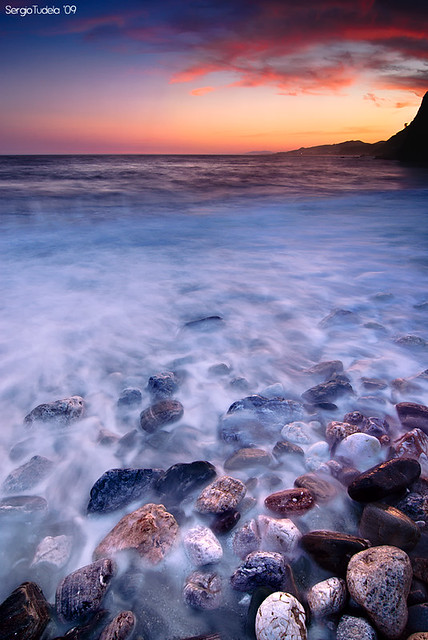
Photo take with infrared filter by paul (dex)
When it comes to digital photography, most of the traditional effects once achieved with filters on film cameras can now be done with photo editing software. However, there are still some unique effects that are best attained using camera filters fitted over your camera lenses. Here is a quick rundown on some of the best filters for your digital SLR cameras.

Photo taken with Polarising filter by Anton Novoselov
Polarising filters - polarisers are ideal to control the appearance of reflections and glare in your images. By filtering the type of light that enters your camera lens, you can minimise the appearance of haze while colours come out more vibrant. Polarising filters are a must-have accessory for any landscape photographer.

Photo taken with ND filter by SergioTudela
Neutral Density (ND) Filter - these filters help limit the amount of light entering the lens which prevents overexposure in daytime shots. ND filters are great if you're looking to increase your aperture to create a sense movement but need to limit the amount of light exposure in a bright outdoor setting.

Photo taken with UV filter by Rosan Nepal
UV Filter - UV filters for digital cameras are often purchased for the purpose of protecting the lens glass from any shock or dirt. Be diligent about cleaning your protective filter to avoid grime and dirt that could affect the brilliance of your image.

Photo taken with ND Graduated filter by kevincole
ND Graduated Filters - these are great for landscape images as they decrease the amount of light let in at the top of the shot (so you get crisp blue skies and stunning clouds without overexposure), while letting in more light at the bottom of the image, where your landscape is. Most ND Graduated Filters are slot in filters, so you will need an additional attachment to fit them to your DSLR.

Photo taken with infrared filter by lrargerich
Infrared filters - infrared filters make the camera image sensor sensitive to infrared light which can produce a stunning surreal effect. While these effects can also be achieved with editing software, many purists believe that these manipulated infrared images are nowhere near as striking as those taken using an infrared filter.
A filter or two can do wonders for digital SLRs and can make a world of difference to your photographs. Combine filter effects with photo editing software, like Photoshop and you can take your images to a whole new professional level. Be sure to have a good understanding of your manual camera settings before you begin to experiment with filters or other camera accessories - leaving your settings on automatic means your camera will adapt to any changes to lighting made by filters so you won't get the effects you're looking for.
Written by Canon Australia
No comments:
Post a Comment